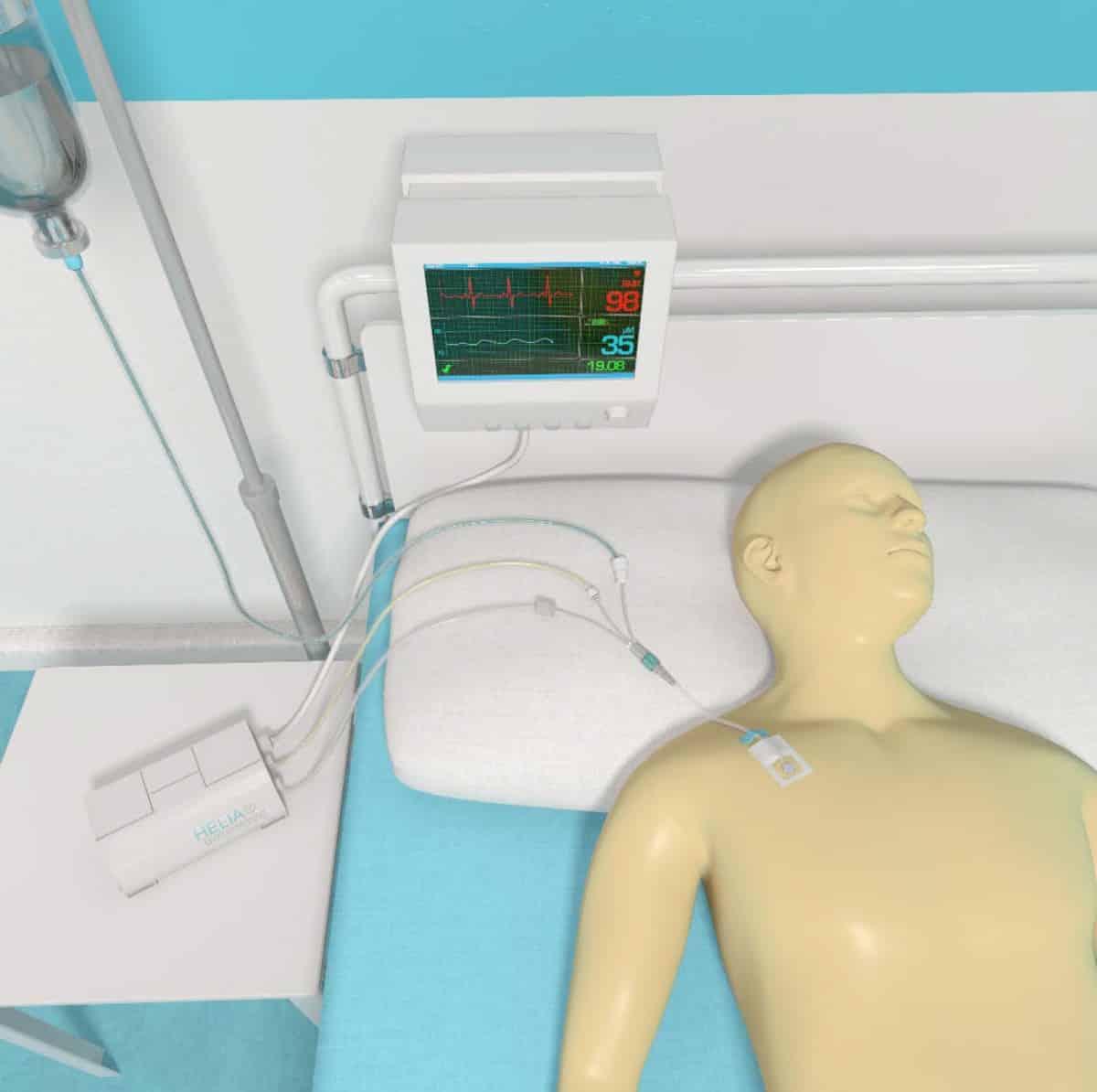
Combating diseases and optimizing treatments. This is what Helia Biomonitoring, a spin-off from Eindhoven University of Technology (TU/e), is working on. Helia Biomonitoring is developing a technology with which specific molecules in a fluid can be continuously monitored. It is a journey with stops in laboratories and industrial processes to finally arrive at the medical application.
“There are several parameters that can already be continuously monitored on patients, such as heart rate, movement and body temperature”, says Menno Prins, co-founder of Helia Biomonitoring. “There are also good sensors to monitor glucose in the skin, but sensors for other biomolecules are not yet available. Nevertheless, according to Prins, it could be very useful to measure more substances.” For example, drug levels in patients. They often get standard doses, but each person is different and reacts to medicines in a different way. As a result, the concentration of medicine in the blood can vary from person to person. By means of a sensor, the concentration of medicines could be set exactly right, which can make a big difference for the patient.”
There are several applications of the technique. In addition to measuring drugs, it will for example also be possible to detect inflammations. “The occurrence of an inflammation is now usually detected by fever and increased heart rate”, explains Prins. “But before those symptoms occur, you can already measure molecules in the blood that show the activation of the immune system.
There are new treatments for cancer that exploit the immune system, so-called immunotherapies. These activate the immune system and make white blood cells attack the cancer. “There are different types of cancer that can be cured with these treatments”, says Prins. However, the immune system may become overactive and also attack healthy cells. “With this technology, an overactive immune system could be detected early”, he says. “And accordingly the therapy could be adapted.”
Prototypes
Before this technology can be used in a hospital, a lot of research needs to be done and different prototypes need to be built. “The aim is to help sick people”, says Prins. “So the chance to unwantedly cause harm to the patient must be as small as possible. Next year he wants to test the technology outside the laboratory. “That’s actually the first prototype. It can only be used by researchers, not lay people. And it certainly cannot be used on patients.”
Industrial Application
According to Prins, the medical application remains the most important goal. “But before that we will be able to use it in other applications, for example in industry. In factories, the system could help in purification processes.” When processing raw agricultural products into food ingredients, it can be useful to keep a close eye on levels of impurities. With this information the manufacturing processes can be adjusted, to reduce energy consumption for example.” According to Prins, developing a sensor for the industrial market can be done faster than for the medical sector.” In the early phase, a new product may not always work perfectly. In industry, it is easier to correct for malfunction than in a medical setting.” In addition, the application in the industry will yield valuable information that will make the technology suitable for later use in the medical sector.
The Search for Partners
According to Prins, the search for the applications of the technology and the matching partners is an interesting step in the development of the company. “When we find novel ways forward, it gives a great feeling”, he says. “It’s not easy to find partners with appropriate visions on the future and complementary knowledge.” In addition, we take a close look at the current global trends and those of the future. “We want to tune into the important trends so that we will have a product that can be used for many years to come.”
This is why the development of the first product is still in full swing. “We now have four application areas for the technology and we have found potential partners for each application”, says Prins. “Establishing a growth path is an important goal for the coming year. We look at how the applications can best fit together in order to ultimately arrive at the medical application.” There are two important points that can contribute to this: attracting people with the right expertise and developing a financing path. “Prototypes must ultimately show how the technique can best be applied and when it is ready for the market. Both the technology and the organization around it are still growing.”
Image: Helia Biomonitoring

